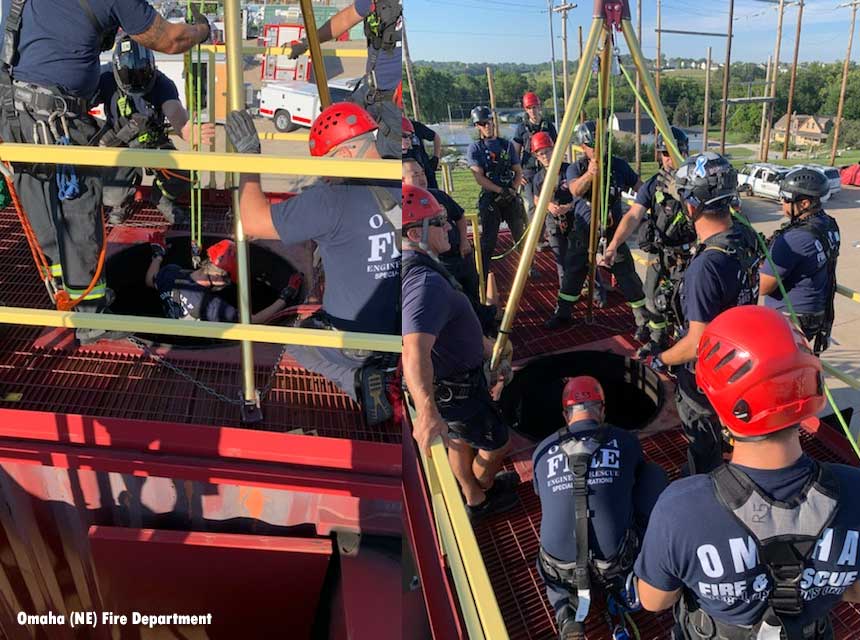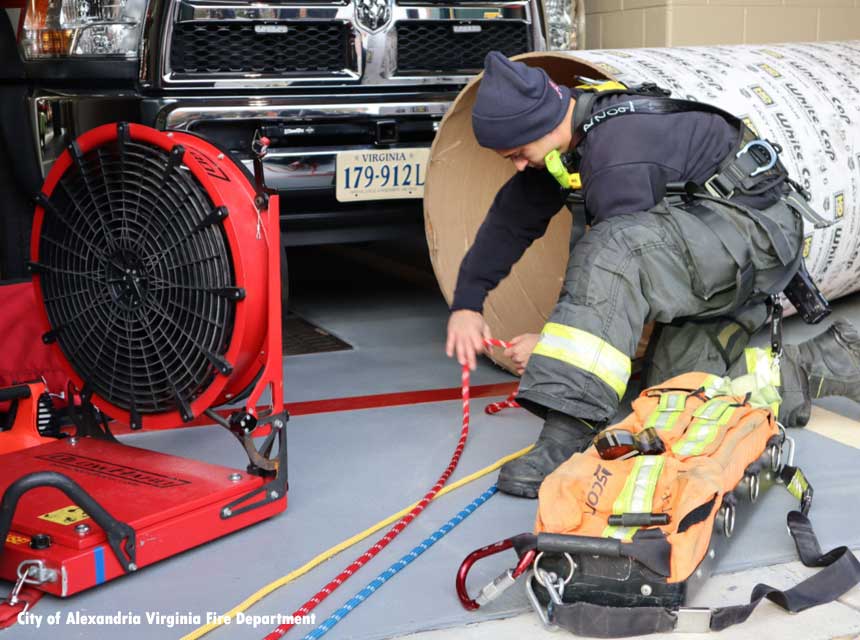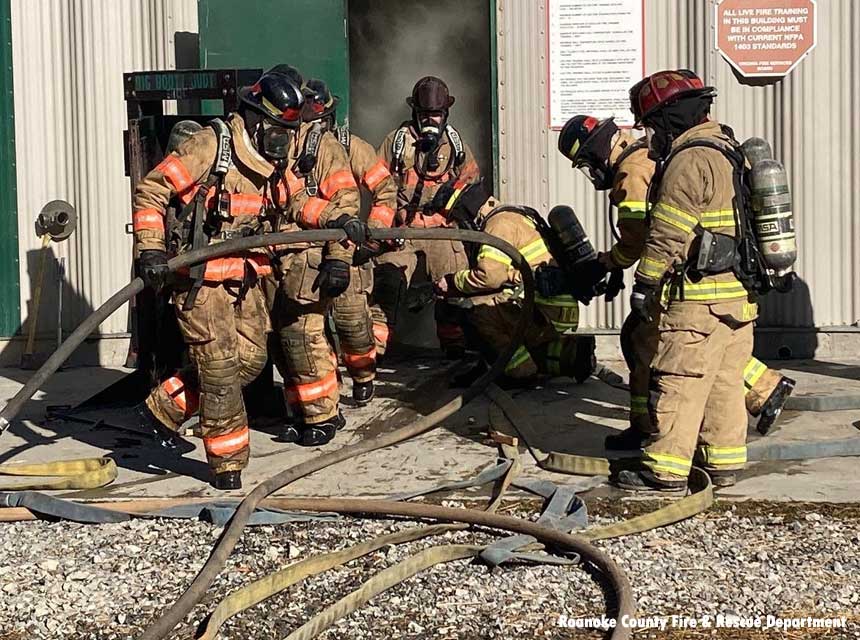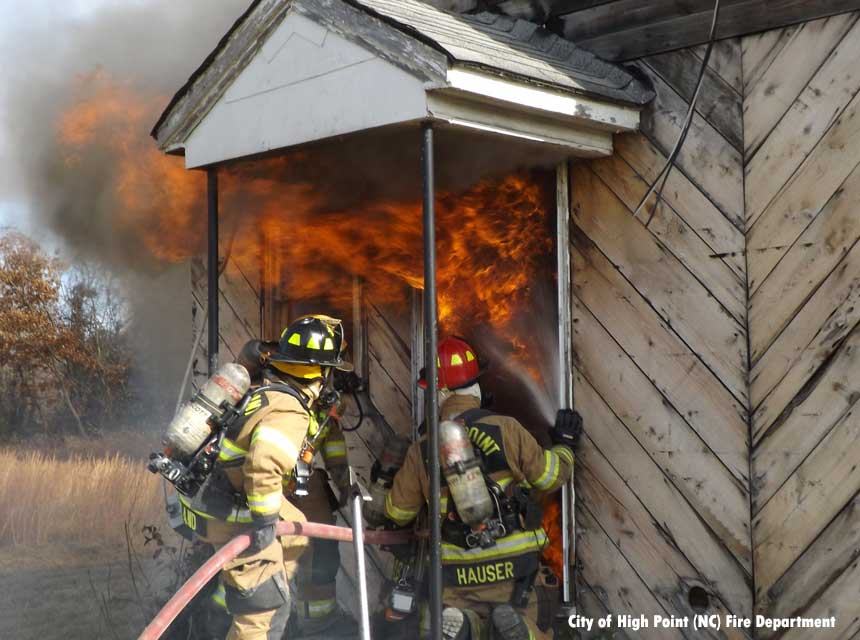The previous Fire Service 101 article covered PPE, SCBA, the infamous two-minute drill, and ladders. It also touched on how phobias and a phenomenon called the “phobic wave” can affect a firefighter’s performance. This article will explore some optional fire academy modules such as confined space, vehicle extrication, and interior live burns. Let’s get right to it!
Confined Space Training
Confined spaces are inherently dangerous, and it is important for firefighters to have specialized training on the hazards of making entry into confined spaces prior to graduating from the academy. These spaces are hazardous because they can be full of poisonous chemicals and gases; they can have small entries but open into cavernous areas with cliff-like drops; and they can cause firefighters or crews to become trapped in entanglements like wires or other building materials. Students will learn that permits can be required by the Occupational Safety and Health Administration (OSHA) to even be allowed to enter certain spaces. Operating in a confined space is serious business and no time to rush ahead without fully taking in all the hazards—or dangers—present on the scene.
How to Expedite a Confined Space Rescue
Confined Space Rescue: Body Recovery vs. ‘Buddy’ Recovery
Confined space training can induce the phobic wave in many fire academy students. This is the time where claustrophobia, if present, will come out swinging! There are many ways to create these spaces to train in, but it often occurs in the following way. A company of students, often in full turnout gear with an SCBA and face mask, make entry into simulators that range in shape and size from round, worm-like mazes to shipping container-sized structures built to reduce visibility, limit movement, and make communication difficult. The company can be sent in with the task of advancing a hoseline or rescuing a victim. The space is small and dark so the company is in a line like ants. They must move backwards and forwards together and feel their way over and around obstacles. It is the job of everyone to be sure all information is relayed correctly to company members and to others who many need the information as the training scenario develops. It is often very hot in these trainers! People can get very agitated and claustrophobic and it is the job of every student to work together to remain calm and complete the task.

Vehicle Extrication
Another module where students are required to work as a well-oiled machine with their company is vehicle extrication class. This is one module many students can’t wait to take. They get to use hydraulic spreaders and other large power tools to cut apart cars and other vehicles. Students even get to break glass, saw out windows, and rescue victims from badly damaged vehicles. However, before it’s time to cut anything, there is classroom study where students must learn how a vehicle is put together, wired, and labeled. Students must know how to disconnect battery cables so there is no inadvertent SRS airbag deployment, which could seriously injure firefighter or accident victims. Students must learn how to stabilize vehicles so they don’t roll or tip over and injure or kill someone. They also learn when it is important to do these things.
Firefighter Safety at Vehicle Extrications
There is a lot of sharp metal and broken glass during the vehicle extrication evolutions so turnout gear or extrication gear—lighter weight but still protective—must be worn along with extrication gloves, eye and ear protection, and a helmet. Students will also learn how to safely perform extrication duties on roadways. It must be said that motor vehicle collisions occur often while firefighters are working on a scene. There are firefighter and police fatalities every year due to this. To be as safe as possible, it is vitally important to learn the policies and procedures of your organization, to follow your commanding officer, and to always “keep your head on a swivel.” This is a phrase students will hear often. It means look out for dangers that could affect yourself or others and speak up or move if you see them.
Live Burns
Live burn training occurs near the end of the academy. It can be described as “putting the pieces together.” In this module, the student actually goes interior in a structure called a burn building. These buildings, optimally, are on the property of fire training campuses. They are built to certain standards to withstand the heat of training fires and allow for ventilation as needed in the form of opening doors and windows on every floor of the structure. Many of these buildings will also have temperature sensors in them to ensure they don’t get too hot; this can damage the building, PPE, and cause additional safety concerns. In the absence of a burn building, a fire department may have access to a donated building or “acquired structure” to do live burns. This is not as ideal and is often discouraged. Some departments do not allow it at all because the environment cannot be controlled enough so they do not believe it is safe enough for students.
Live Fire Training Is Worth It: Real Training for Firefighters
Getting the Most Out of Acquired Structure Live Burns
Live-Fire Training: Much Preparation for Safety
Interior live burn training is not a part of every academy. It is considered part of the Firefighter II curriculum. A student can still become certified as a firefighter at the Firefighter I level without “going interior.” Live burns are a large operation: there are safeties—people certified to ensure the state, local or departmental requirements are being upheld—to monitor the students and the fires; safeties who monitor the exterior of the building; a medical crew on scene in case there are any injuries; and often a crew called a rehab crew. This crew ensures that the companies are in good physical condition and it is safe for them to go back into the building for the next evolution. Live burns are excellent for teambuilding for the members of the academy and also between students and members of the department. This training is important because even though it is a very controlled environment, it shows the student’s ability to perform the skills learned throughout the fire academy while functioning in an IDLH environment under real fire conditions. All the companies in the academy may work together at a live burn: one throwing ladders and performing ventilation, one performing search and rescue, one or two advancing hoselines, and one as the “on deck” or backup crew. This is very much how a well-managed fire scene can work, so this type of training is a gut check and an excellent first-time experience of fireground operations.
The Introduction to the Fire Academy series was supposed to have only three parts, but there is simply too much information to share about the nuts and bolts to end it here! The next part will look at hoselines, water supply, and academy graduation! Subsequently, we will explore an important class that is offered in some academies but is often given in full after graduation to all firefighters. It is called Mayday Firefighter Down. It teaches you how to save your own life and the lives of your brother and sister firefighters.

Mandy George is a retired lieutenant in the Chesapeake (VA) Fire Department. She has a master’s degree in emergency and disaster management, a master’s degree in professional writing, and an associate’s degree in emergency medical services. She is also a Nationally Registered Paramedic (NRP) and a Virginia Office of Emergency Medical Services (VAOEMS) Education Coordinator.
FIRE SERVICE 101
Introduction to the Fire Academy: PPE, SCBA, and Ladders
Introduction to the Fire Academy






